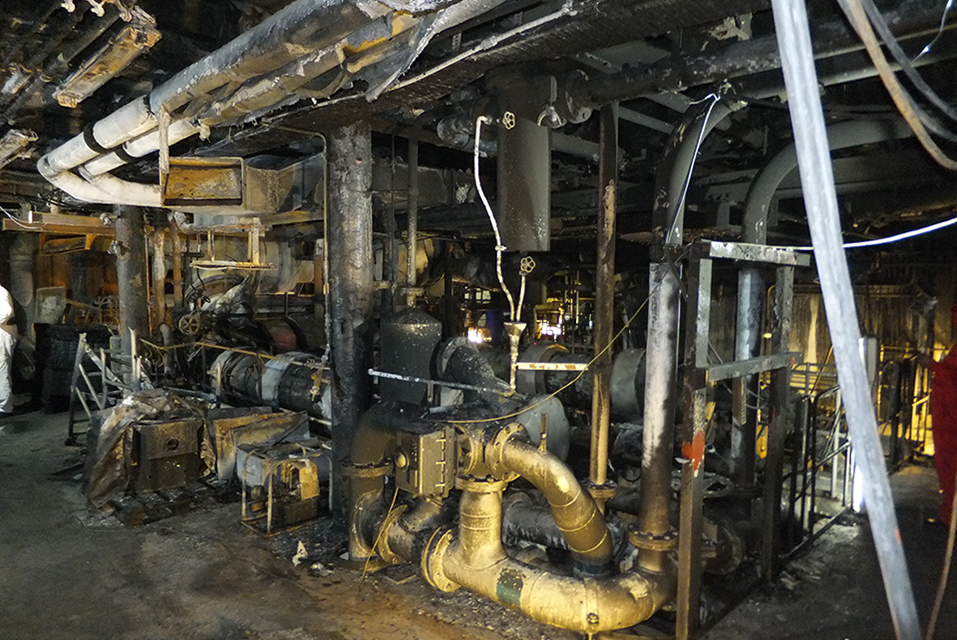Fire in engine room on ro-ro passenger ferry Pride of Canterbury
Location: Port of Calais, France.
Accident Investigation Report 22/2015
Investigation report into marine accident including what happened, safety lessons and actions taken:


Summary
On 29 September 2014 as Pride of Canterbury was approaching Calais, it became apparent that the starboard controllable pitch propeller was not responding, so the starboard shaft was declutched and the two starboard main engines were stopped. The prevailing weather conditions were such that the master was content to proceed using one shaft and one bow thruster. As the ship approached its berth, a pipework joint in the starboard controllable pitch propeller system ruptured, spraying oil on to the exhaust uptakes, starting a fire. The main engine room was evacuated, the general emergency alarm was sounded and the passengers were mustered at emergency stations. The ferry berthed safely, the fire was extinguished using the ship’s hi-fog system and a fire hose, and the passengers and cargo were disembarked normally.
The investigation determined that the back pressure valve in the starboard controllable pitch propeller hydraulic system had jammed shut, resulting in the return line oil pressure rising to the point where a flanged pipework joint failed. The failed joint, along with others in the system, was not shielded to prevent a spray of oil in the event of joint failure. The back pressure valve was found to be worn and had not been tested for functionality during its 23 years of service.
Safety lessons
- the potential for the whole controllable pitch propeller hydraulic system to experience high pressure had not been adequately considered
- the method for annually testing the controllable pitch propeller system’s back pressure and safety relief valves was not specified
- the lack of a high pressure alarm prevented immediate awareness of high pressure in the system
- an effective joint shield could have prevented the spray of oil onto the hot engine uptake
- the storage of combustible materials near the two main engines allowed the fire to spread
Recommendations
Lloyd’s Register has been recommended (2015/153) to propose to the International Association of Classification Societies a unified requirement for high pressure alarms to be fitted in controllable pitch propeller systems.